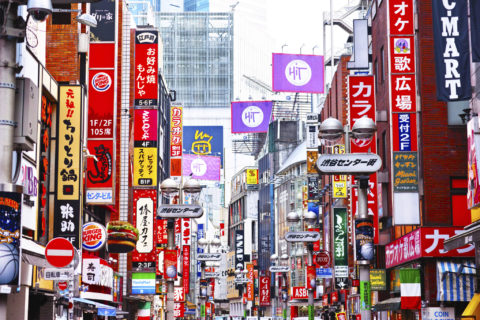By Kevin Gray
‘Asia is a Western idea – there’s really no such place as Asia. All the countries out here are different from each other.’ Though I have now lived in ‘Asia’ for many years, I still recall this bit of advice offered long ago by a former resident of several countries in this region. Without a doubt, there is considerable variety in the West as well but Western nations share philosophical and religious traditions among themselves to a greater degree than most Asian countries do with other Asian nations. Moreover, many Asian nations are quite heterogeneous; more than 20 regional languages are spoken in India, for instance, besides Hindi and English. Whether or not it’s a real place, Asia is an exceptionally diverse place!
Here are a few basic facts, gleaned from Wikipedia. Asia ‘is the Earth’s largest and most populous continent located primarily in the eastern and northern hemispheres. Though it covers only 8.7% of the Earth’s total surface area, it comprises 30% of Earth’s land area, and has historically been home to the bulk of the planet’s human population (currently roughly 60%). Asia is notable for not only overall large size and population, but unusually dense and large settlements as well as vast barely populated regions within the continent of 4.4 billion people. ‘ 1
It includes 49 countries and some of the world’s largest cities. While China has exerted considerable influence on other nations in this massive region, so have Islam and India and, furthermore, there is much about Asia that is locally indigenous. There are at least a dozen major language groups in Asia, for example. As an historical side note, the word Asia apparently dates back to ancient Greece and the Roman word Asia was a translation of the Greek Ἀσία.
To be successful marketers we must understand people, and Asian consumers are often poles apart from their Western counterparts. One scholar who has researched cross-country differences in depth is Geert Hofstede, a Dutch social psychologist. 2 He breaks down national culture into the following six dimensions:
- Power Distance: This dimension expresses the degree to which the less powerful members of a society accept and expect that power is distributed unequally. The fundamental issue here is how a society handles inequalities among people. People in societies exhibiting a large degree of power distance accept a hierarchical order in which everybody has a place and which needs no further justification. In societies with low power distance, people strive to equalise the distribution of power and demand justification for inequalities of power.
- Individualism versus Collectivism: The high side of this dimension, called individualism, can be defined as a preference for a loosely-knit social framework in which individuals are expected to take care of only themselves and their immediate families. Its opposite, collectivism, represents a preference for a tightly-knit framework in society in which individuals can expect their relatives or members of a particular in-group to look after them in exchange for unquestioning loyalty. A society’s position on this dimension is reflected in whether people’s self-image is defined in terms of “I” or “we.”
- Masculinity versus Femininity: The masculinity side of this dimension represents a preference in society for achievement, heroism, assertiveness and material rewards for success. Society at large is more competitive. Its opposite, femininity, stands for a preference for cooperation, modesty, caring for the weak and quality of life. Society at large is more consensus-oriented. In the business context Masculinity versus Femininity is sometimes also related to as “tough versus gender” cultures.
- Uncertainty Avoidance: The uncertainty avoidance dimension expresses the degree to which the members of a society feel uncomfortable with uncertainty and ambiguity. The fundamental issue here is how a society deals with the fact that the future can never be known: should we try to control the future or just let it happen? Countries exhibiting strong UAI maintain rigid codes of belief and behaviour and are intolerant of unorthodox behaviour and ideas. Weak UAI societies maintain a more relaxed attitude in which practice counts more than principles.
- Long Term Orientation versus Short Term Normative Orientation: Every society has to maintain some links with its own past while dealing with the challenges of the present and the future. Societies prioritize these two existential goals differently. Societies who score low on this dimension, for example, prefer to maintain time-honoured traditions and norms while viewing societal change with suspicion. Those with a culture which scores high, on the other hand, take a more pragmatic approach: they encourage thrift and efforts in modern education as a way to prepare for the future. In the business context this dimension is related to as “(short term) normative versus (long term) pragmatic” (PRA).
- Indulgence versus Restraint: Indulgence stands for a society that allows relatively free gratification of basic and natural human drives related to enjoying life and having fun. Restraint stands for a society that suppresses gratification of needs and regulates it by means of strict social norms.
Though Hofstede’s research has not found universal acceptance among scholars, it is frequently cited in the Journal of Marketing Research, the Journal of International Marketing and other academic publications. By and large, I find Hofstede’s framework sensible and interested readers can see how dozens of countries around the globe score on his six dimensions by following this link: http://geert-hofstede.com/countries.html.
Marketing in Asia strikes many Westerners new to the region as rather simple and basic. Big is bigger in Asia and to a significant degree it’s through its size that a company establishes much-needed trust and credibility. Branding is typically less sophisticated and more centred on brand awareness, with 15-second TV spots and reminder advertising relatively more common. Marketing research for the most part is not as advanced and is embraced less enthusiastically in Asia and, on the whole, marketing in Asia seems closer to the Ehrenberg-Bass Institute than to Philip Kotler, though I suspect this is coincidental.
Being a well-established Western brand remains an asset but has never been a guarantee of success. Glocalization is easier blogged than done and companies new to the region should be especially careful about any assumptions they are making, consciously or not. Actually, assumptions which seem completely logical may be the most perilous since they are the ones least likely to be scrutinized.3 Historically, the failure to conduct marketing research has been a key to failure and this becomes even more obvious when companies venture into uncharted waters.
There are countless details international marketers must be sensitive to. Colours that are appealing in one nation may turn people off in another. Symbols can have very different meanings or nuances as well and a brand logo or brand name might not travel very well from West to East or even within Asia. Names easy to pronounce by natives of one country may be next to impossible for those in another, and some phonetic combinations can have unintended implications. Whole books have been written about these matters and one I have found particularly astute is Brand EsSense: Using Sense, Symbol and Story to Design Brand Identity. The author, Neil Gains, is a veteran marketing researcher based in Singapore.
Interpersonal relationships are especially crucial in Asia and business-government ties more palpable. Negotiation styles may seem byzantine compared to our own and are a regular source of frustration for Westerners, as ours surely are for many Asians. Asian firms selling to the West encounter their own challenges, of course, and their struggles and successes offer clues as to what works best for them in their home countries as well as shedding light on their national culture.
Effective marketing doesn’t just happen – it must be managed effectively. Managing in one’s own country can be challenging enough but managing employees whose native culture and tongue are very different from one’s own is trickier still. Not every company has depth at the senior level and it’s not always easy to find the right people in the local country. Even for lower-ranking positions, the required skills and experience may not be in abundant supply. Employee turnover is extremely high in some countries and fluent English and an MBA from a prestigious Western university are not assurances that a new recruit will meet expectations or remain with a company for long. That all said, there are many extraordinary people in Asia and savvy organizations anywhere have a knack for discovering and developing talent.
If Asia were a product, branding it would not be easy! Commonalities coexist with huge diversity…it’s a non-linear world of contrasts that defies simple categorization. Even if it’s not a real place, it’s a fascinating place.
_____________________________________________________________________________________
Notes
1 Wikipedia: http://en.wikipedia.org/wiki/Asia
2 Geert Hofstede’s website is: http://geert-hofstede.com
3 For examples of mistakes Western multinationals have made in Asia see the following:
http://www.cnbc.com/id/101067298
https://www.techinasia.com/4-mistakes-behind-groupons-failure-in-china/
http://www.eurogamer.net/articles/2012-12-13-why-xbox-failed-in-japan
http://www.uabr.auckland.ac.nz/files/articles/Volume5/v5i2-stringer.pdf
https://depts.washington.edu/foster/marketing-failure-iphone-in-india/
https://www.linkedin.com/pulse/20130801095344-275552820-business-success-in-asia-the-eight-lessons-i-ve-learned
Kevin Gray is president of Cannon Gray, a marketing science and analytics consultancy.



2 comments
Very good article indeed and when it comes to India there is so much complexity that Hofstede’s dimensions apply internally and differ from region to region. The classic clash between the linear and cyclic is most evident in India. Nothing has changed from the days that Alexander the great encountered the gymnosophist on the banks of the Indus!
good basic sense from Kevin and the references you cite are a great crash course for people new to Asia.